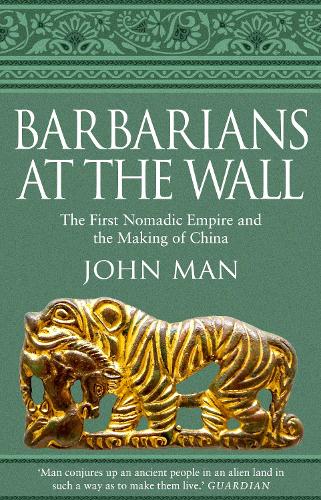
Barbarians at the Wall: The First Nomadic Empire and the Making of China
(Paperback)
Publishing Details
Barbarians at the Wall: The First Nomadic Empire and the Making of China
By (Author) John Man
Transworld Publishers Ltd
Corgi Books
17th March 2020
23rd January 2020
United Kingdom
Classifications
General
Non Fiction
Asian history
939.6
Physical Properties
Paperback
352
Width 128mm, Height 197mm, Spine 21mm
243g
Description
The untold story of the first nomadic empire and the making of China. 'Man does for the reader that most difficult of tasks- he conjures up an ancient people in an alien landscape in such a way as to make them live.' - Guardian The people of the first nomadic empire left no written records, but from 200 BC they dominated the heart of Asia for 400 years. They changed the world. The Mongols, today's descendants of Genghis Khan, see them as ancestors. Their rise cemented Chinese unity and inspired the first Great Wall. Their heirs under Attila the Hun helped destroy the Roman Empire. We don't know what language they spoke, but they became known as Xiongnu, or Hunnu, a term passed down the centuries and across Eurasia, enduring today in shortened form as 'Hun'. Outside Asia precious little is known of their rich history, but new evidence reframes our understanding of the indelible mark they left on a vast region stretching from Europe and sweeping right across Central Asia deep into China. Based on meticulous research and new archaeological evidence, Barbarians at the Wall traces their epic story, and shows how the nomadic cultures of the steppes gave birth to a 'barbarian empire' with the wealth and power to threaten the civilised order of the ancient world.
Reviews
Man does for the reader that most difficult of tasks: he conjures up an ancient people in an alien landscape in such a way as to make them live. * Guardian *
His ability to put us in the picture, to feel, smell and almost touch the surroundings he describes, is matched by his ability to tell a good story. * Michael Palin *
Author Bio
John Man is a historian with a special interest in Asia and the nature of leadership. His books, published in over twenty languages, include bestselling biographies of Genghis Khan, Kublai Khan and Attila the Hun, as well as histories of the Great Wall of China, the Mongol Empire and the Amazons.
